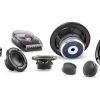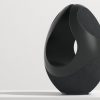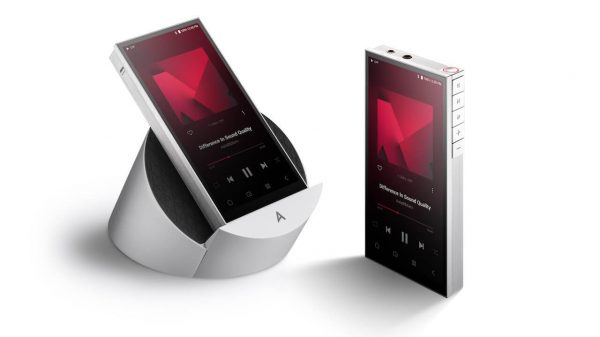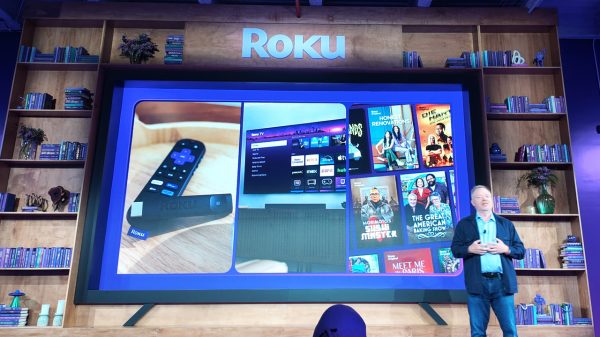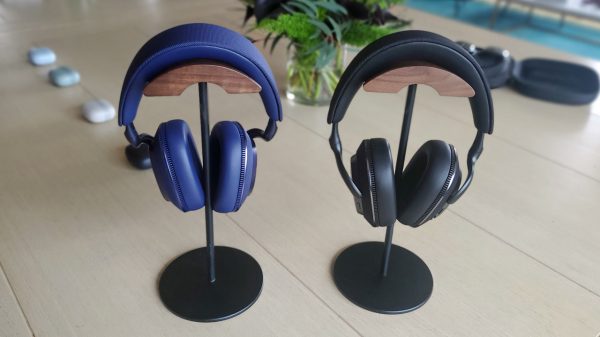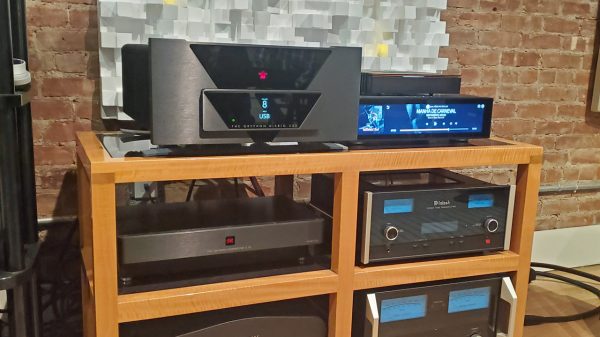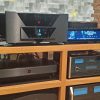I’m not the TV guy, the home theater guy or the A/V room guy, and I don’t own a Sonos system, so why on earth am I reviewing the Sonos Ace headphones? Read on to find out.
Years ago, I looked at a Sonos system. I started out with Arylic’s multi-room components as a budget alternative for a while then moved to Volumio and their Rivo and Integro devices. I’m an inveterate tinkerer so fiddling with Roon and Volumio was ok with me, but I can certainly see the appeal of a plug and play ecosystem like Sonos for those looking for the easy path forward. The idea that one can download the app, connect the speakers and have a multi-room system without need of wires, rack closets, and a technical staff certainly has its appeal.
Of course, you pay for that integration and ease of use and, like most Sonos products, the Ace carries a premium price tag. The Ace retails for $449 putting it in direct competition with the Apple AirPods Max, Bose QuietComfort Ultra, Bowers & Wilkins Px7 S2e, Sennheiser Momentum 4, and Sony WH1000-XM5. To compete at this price, the Ace needs to do a lot of things extremely well.

What’s in the Box?
The Sonos Ace packaging is understated, well thought-out, and typical of Sonos. Once opened, the kit contains 2 cables (3.5mm to USB-C and USB-C to USB-C), a hard case with an open-ended clamshell case inside for cable storage and the headphones themselves.
Fit ‘n Finish
The headphones and outer case are color coordinated with current colorway offerings of soft white or black. At least a few early reviewers received some additional color options that may eventually reach the market but, as of this writing, the Sonos site is only offering the two basic colors. The pair I received are the standard white with the inside of the case and the inside of the right ear-cup a mint-green color. The case is well made with a zip closure and a partition to keep the cups from touching as well as the previously mentioned smaller internal case for cable storage. It’s a unique design for cable storage that I have difficulty finding good descriptive language for. Thankfully, the camera was invented for just such a purpose.

The Sonos Ace headphones themselves use a single steel headband with a polymer outer layer and a vegan leather-wrapped memory foam underside. Adjustment of the cup height is by friction-fit stainless steel rods that have nearly 2 inches of adjustment range on each side to fit a wide range of head shapes and sizes. The cups have roughly 20° of adjustment on the horizontal axis and 90° on the vertical axis which allows for folding the cups flat for storage.
Ergonomically Speaking
The Ace has moderate clamping force which I found comfortable as a glasses wearer. This can be problematic with some over-ear ANC headphones. The cups have a rounded rectangle shape and are relatively wide and flat similar to the AirPods Max or the Final Audio UX series models. The headband inserts into the cup via a stainless steel lined port and is admittedly more upscale than either of the two models I mentioned when addressing cup shape.
Cups are roughly 4 inches tall, just slightly narrower than tall, and a bit over an inch deep. Pads are the same memory foam and vegan leather used on the headband with the left having a white liner and the right having a mint green for instant visual orientation of the headset. The ear pads are magnetically held in place and are easily removed for cleaning or replacement.

The Sonos Ace uses 40mm dynamic drivers with a custom port that is visible with pads removed just below the upper curve in the inner cup. Opposite the port on the inner cup is a much larger sensor that has a corresponding opening in the pad.
I mention this as the port is not visible with the pads on while the sensors are visible. Drivers are mounted with a slight angle to the ear and are largely hidden by the inner cup. Because of the angled driver and the fact that the cups include a screen over the drivers, the ear pads only fit in one orientation. I do question whether the clarity would be improved by exposing more of the driver as there is a good bit of the driver hidden behind polymer in this design.
Controls are simple with a single power/pairing button and the USB Type-C charging port on the left and a volume rocker (3-position switch) with push-in function for volume and play/pause functions and a push button for ANC/awareness control.


In addition to the physical controls, the Sonos App on Android and Apple devices adds a three band EQ, a loudness function, wear detection control, head-tracking, the TV Swap control, and multi-point control not available in the physical controls as well as ANC/awareness controls if you prefer not to use the buttons on the headset.
The EQ uses bands that are a bit broader than I prefer, but I did find the parametric EQ in UAPP (USB Audio Player Pro) worked well for those who want somewhat narrower bands and more pinpoint control.
I also found that I prefer the sound signature with loudness disabled, but I listen at fairly low volume so those used to listening at higher volumes may find that it makes little difference as it tapers off as volume increases by design.
Head-tracking
The Ace’s on-head detection is pretty standard, but the head-tracking isn’t. Imagine for a minute the stage directly in front of you when you turn your head to the left, the sound reaches the right ear first so you can tell instinctively where the sound is coming from.
Most headphones negate that because if you turn your head the stage follows you. With head-tracking enabled the stage stays planted straight forward and the sound shifts are you turn your head closely mimicking what would happen were you at an actual concert.
No special tracks are required to make this work and I had fun listening to some of my old favorites and intentionally testing the head-tracking.
It’s trippy when you first try it, but fun nonetheless.
Connectivity
With multi-point connection enabled, two devices can be connected using SBC, AAC, or aptX, including adaptive and lossless. My OnePlus 12 phone supports aptX lossless, which is still a rarity in the market, so I was able to test out the Ace using that codec as well as AAC from an iPad and SBC using my laptop.
Connectivity was good with all three as long as distances were kept within reason and obstacles were fairly light (drywall – no problem, cinder block – problem). For those without an aptX lossless enabled device, the Ace also supports lossless audio over the provided cables.
It won’t however allow you to listen via cable with the headphones powered off.
Battery Life
Battery life is listed as 30+ hours of listening time with ANC off or 24 hours with ANC or awareness enabled. I had no trouble exceeding both of those numbers with volumes kept at moderate levels.
Average listening time in my tests was close to 33 hours without ANC and 26 hours with. From depleted, the Ace needs roughly 3 hours to fully recharge but can be quick-charged to provide 3 hours of listening time with just 3 minutes of charge time.
TV Swap?
The TV Swap function works with a Sonos Arc, Arc Ultra, Ray, or Beam sound bar and allows the listener to swap between the sound bar for shared listening and the Ace for private listening.
The sound is said to carry over that immersive surround sound effect when swapping over from the soundbar, but this was not something I was able to test in my current system.
This feature will be a welcome addition for those with a TV in the bedroom or with the tendency of a significant other to fall asleep on the couch during movie night.
Somewhat oddly, that is the only interaction the Ace has with any other Sonos product.
I had hoped that the Ace would be a Wi-Fi enabled device that could be added to the Sonos ecosystem as another speaker so you could have the same convenience offered with TV swap with the rest of your Sonos devices.

Having the ability to stream directly to the ACE over lossless Wi-Fi (which, in our tests, has been more stable than Bluetooth) would have been a great victory for Sonos.
As it stands, the TV Swap feature may be a selling point for those with one of the supported soundbars, but it falls well short of the differentiator many were hoping for and expecting from Sonos.
Dolby Atmos is also only supported via the TV Swap function so don’t expect to find it in the headphone’s music settings. Dolby Atmos music should be supported (with a compatible music streaming app like Apple Music, TIDAL or Amazon Music on your TV), but the ACE’s spatially enhanced home theater style effect on Dolby Atmos content won’t work with local music apps on your phone or computer.

Listening Notes
The Sonos Ace headphones have good bass extension with lows transitioning from heard to felt in its lowest regions and a slight roll-off noted below 30Hz. There is a mild emphasis centered at around 120Hz that drops back to baseline (pun intended) by about 250Hz or so.
This gives kick drum good weight without sounding bloated or loose. Overall, the bass has a mild emphasis with good detail and clarity. It’s not quite as neutral as the AirPods Max but nowhere near as bass heavy as the Sony XM5 or Sony ULT Wear, so those who found the Sony headphones a bit too much and the Apple a bit dull, will likely find the Ace a happy medium.
The transition from mid-bass into the lower midrange is fluid with good transparency and good weight, if sounding a little recessed. The tuning here again is a bit different from most of the Ace’s competitors in that the Ace has a lift centered around 1kHz with a slight dip prior to 2kHz and then a gradual decline into the mid-treble region.
The lift is slight, so don’t expect lots of extra power in the midrange, but it does result in good guitar tone as well as lower strings having a nice amount of energy. Male voices have good timbre and cut through the instrumentation well, standing on equal footing with higher voices which sound very natural, with no hint of nasal tone or sibilance. Again, it’s not quite neutral, but the emphasis is well-placed and gives the Ace a bit of extra vibrancy and life. The tuning also helps lift voices out of the background when watching TV and movies, which was likely a good portion of the reasoning behind the tuning (more on that in a later section of the review).
Lower treble has good clarity, giving percussion a nice snap. Mid treble has a bit more energy, giving cymbals a needed lift and a more natural tone. Again, the tuning walks the line between providing enough energy to improve sound without becoming harsh or glaring. Like most ANC headphones, air and sparkle at the top are limited by the design, but overall the Ace manages to deliver more openness than expected.
The soundstage is a bit wider than deep, with some height but, again, due to the design, none of the dimensions are particularly large. For the most part, seating the orchestra is straight forward although I did find instrument separation and clarity to be a bit better in the lower ranges than at the top where things were susceptible to a bit of crowding at times. Imaging is quite good, but head-tracking isn’t continuous so do expect if using the head-tracking feature the sound make take a moment to catch up. This isn’t a big deal in music listening, but might be critical to gamers so I mention it here.
ANC performance is solid, but not class-leading largely to the lack of any anti-wind setting. In low wind environments, the ANC did well and, combined with passive isolation, reduced outside noise by roughly 70%. Higher-pitched noises cut through a bit more than lower as is often the case, and I found myself liking the tonality of the Ace a bit better than the Sony or Apple offerings, finding the competitors a bit more isolating. In high wind environments, the Ace loses to both competitors as the listener hears a lot of anti-noise being added to combat the wind.

The Bottom Line
The Sonos Ace is likely to elicit strong opinions. For owners of Sonos systems, it will likely fall a bit short of their expectations as it’s neither a Wi-Fi enabled device (with one specific exception) nor does it act as an integrated device in the Sonos ecosystem. If you were hoping to add a headphone as another zone or room in your Sonos app, that’ll have to wait for another product (or possibly a software update). But owners of a compatible Sonos soundbar will likely love the TV Swap feature to maintain that immersive home theater sound without waking the neighbors.
For those interested in a boutique wireless headphone with great build, good comfort and good sound, the Ace is likely to get high marks. I really like the look and feel of the Sonos Ace, despite the obvious AirPod Max design cues, and found them more comfortable for extended listening sessions than either the AirPods Max or the Sony XM5. The Ace is hands-down better looking than the Sennheiser Momentum 4, Sony XM5, and Bose QC Ultra and is a step above the Apple in build quality. Arguably its biggest competition in build quality is the Bowers & Wilkins Px7 S2e which is another extremely well made option.
The tuning also gets high marks as it isn’t quite neutral, but the deviations are in areas that help vocals cut through the background and give the Ace a bit more vibrancy and life. I found the AirPods Max to sound a bit dull when A/B testing and the Sony XM5 to be a bit bloated at the low end by comparison. Like Goldilocks said, “this one is juuuuuust right.”
Overall, I think the Ace will have no trouble standing on its own merits, if Sonos devotees will give it the opportunity. Sonos did a lot of things very well for their first-ever headphone and, while there are still some areas that could be improved upon, none are fatal flaws in my evaluation. I’d rather have the Ace than many of its competitors when build, comfort, sound, and battery life are all taken into consideration.
Pros:
- Not quite neutral, but additions help lift vocals and give a more vibrant tone
- Great build quality
- Solid battery life
- Lossless support in both wired and wireless modes
- TV Swap is nice if you have a supported Sonos soundbar
Cons:
- Not recognized as a speaker in the Sonos app so it cannot be connected to Sonos systems as an endpoint or dedicated zone/room.
- Head-Tracking lags at times
- No anti-wind ANC
- Cannot be used with power off, even when wired
Where to Buy:
Related Reading:







